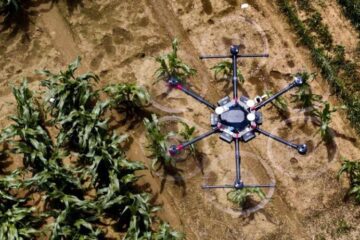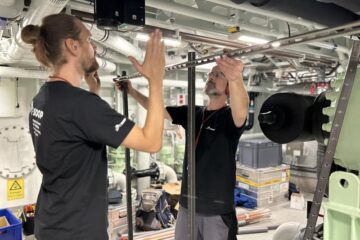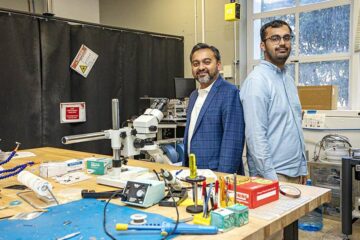Fast and Cheap Detection of Bacteria

Carbohydrates displayed on the surface of cells play critical roles in cell-cell recognition, adhesion, signaling between cells, and as markers for disease progression. Neural cells for instance use carbohydrates to facilitate development and regeneration and viruses recognize carbohydrates to gain entry into host cells. Identification of the specific saccharides involved in these processes is important to better understand cell-cell recognition at the molecular level and to aid the design of therapeutics and diagnostic tools.
Testing the interaction between bacteria and carbohydrates
So-called microarrays have proven to be a versatile technique in biology, chemistry and medicine to rapidly asses the interactions of ligands and analytes. Researchers of the Laboratory of Organic Chemistry have demonstrated that interactions of bacteria to carbohydrates can also be probed in a microarray format. These results published in the current issue of the scientific magazine “Chemistry & Biology” suggest that microarrays are a general platform to study the carbohydrate-cell interactions. The researchers have also expanded the scope of these methods to include the detection of pathogens within complex mixtures, e.g. blood. Pathogens captured by the arrays can be cultured and further tested for antibacterial susceptibility. It is likely that these assays will allow for rapid screening and testing of pathogens and in uncovering new roles for carbohydrates in cellular biology.
Media Contact
All latest news from the category: Life Sciences and Chemistry
Articles and reports from the Life Sciences and chemistry area deal with applied and basic research into modern biology, chemistry and human medicine.
Valuable information can be found on a range of life sciences fields including bacteriology, biochemistry, bionics, bioinformatics, biophysics, biotechnology, genetics, geobotany, human biology, marine biology, microbiology, molecular biology, cellular biology, zoology, bioinorganic chemistry, microchemistry and environmental chemistry.
Newest articles

AI to Make Crop Production More Sustainable
Drones monitoring fields for weeds and robots targeting and treating crop diseases may sound like science fiction but is actually happening already, at least on some experimental farms. Researchers from…

Cruise Ship as Data Collector
New Approaches in Ocean Observation… Scientific research – not only confined to dedicated research vessels but also from non-scientific vessels and marine infrastructures. This is one of the ideas promoted…

Groundbreaking microcapacitors could power chips of the future
Scientists developed microcapacitors with ultrahigh energy and power density, paving the way for on-chip energy storage in electronic devices. In the ongoing quest to make electronic devices ever smaller and…





















